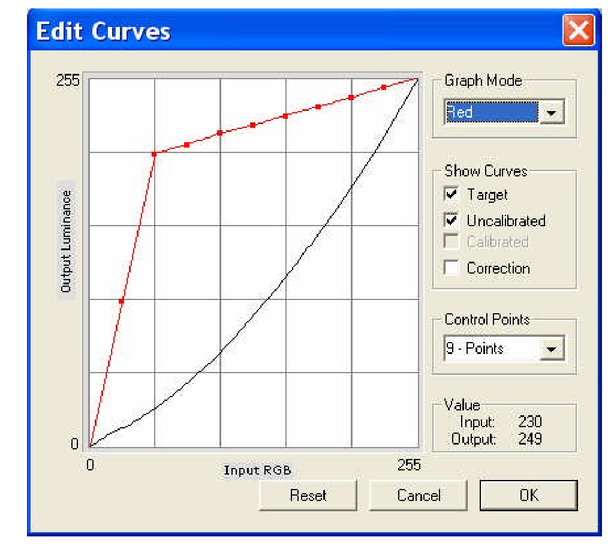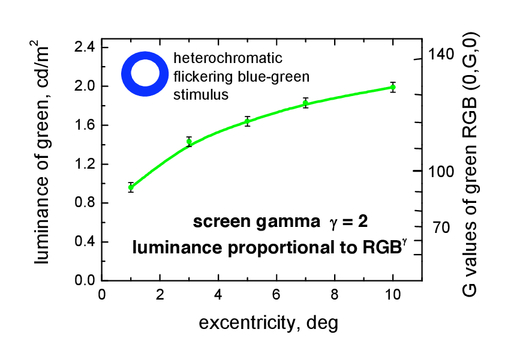|
|
Summary.Duties of optometrists as a specific and regulated profession nowadays are growing rapidly within the quality of technical means and clinical patient care, within increasing of visual stress intensity, and trends to higher patient visual comfort. Currently optometry teaching in different countries still is different instead of trends to obtain the coherence in education and expertise of optometrists at least within the European Union countries. Latvia has almost 15 year experience in optometrist teaching at bachelor and master levels following the curriculum similar and close to the curriculum in Great Britain, Ireland, Norway. Present report relates to the experimental studies of colour vision provided within training of optometrists in University of Latvia. Knowledge of the following aspects related to human colour vision is included in practical experimental lessons for students going to be optometrists or vision scientists.
The report presents and demonstrates a number of techniques used in laboratory lessons devoted to obtain knowledge on the previously mentioned colour vision characteristics (such as “Determination of colour display spectral emittance, colour gamut, gamma-function and display calibration”, “Determination of reflective surface colour coordinates”, “Optical transfer function determination (a model eye together with optical appliances: lenses, progressive lenses, Fresnel prisms)”, “Light scattering of different wavelength emission in a cataract eye model”, “Heterochromatic flicker photometry”, “Colour stimuli visual acuity”, “Polychromatic stimuli colour contrast sensitivity”. To determine emitting and reflective stimuli spectral characteristics, we used in the laboratory work a fibre “Ocean Optics” spectrometer supplied with a small integrating sphere. Normally the colour coordinates and the colour gamut of the display emission are determined in CIE XYZ and L*a*b* colour spaces. To perform display calibration procedure we used “Spider2Pro” photometer with software allowing us to rebuild the gamma function in the most proper way in all specific tasks, where the display is used to present visual stimuli. Optical properties of “model eye + appliance” system are determined using a three colour RGB laser (CNITRA, wavelengths – 670nm, 532nm, 473nm) as well from the point spread function using a double path system as from the increase of the beam divergence. In model experiments light scattering is induced using, firstly, a PDLC (polymer diffused liquid crystal) cell with controllable light scattering by applying different AC voltage. Secondly step-by-step light scattering is obtained using obstacles performed on composites of MMA (methyl methacrylate) glue with dispersed small glass microparticles. The refractive indices of PMMA n = 1.44 and glass n = 1.5 are close to the indices of the clear human eye lens and for cataract protein formation. Changing the concentration of the glass particles and the thickness of the composite layer it possible to adjust the light scattering level to different stages of the cataract development. Light scattering depends strongly on the wavelength and such obstacles are used in a number of laboratory works to study the effect of scattering on perception of different colour stimuli. Aberrations of a real human eye are determined using “MultiSpot|250” aberrometer. Psychophysically the visual performance is studied in two ways – using visual acuity letter (e.g., Landolt C) charts build of non-isoluminant stimuli with different colour contrast (white-blue, white-red, white-green, etc.), or quasimonochromatic (red, green, blue) stimuli of different intensity contrast. Secondly, the Gabor gratings are used for contrast sensitivity measurements using quasimonochromatic sinusoidal intensity modulated stimuli or similar structure isoluminant grating stimuli with colour contrast (opponent colours red-green, blue-yellow). These stimuli are generated on the PC screen and quasimonochromaticity of stimulus, e.g. “blue”, actually means relatively broad emission of the blue CRT screen phosphors. The human vision is very sensitive to contrast changes (contrast sensitivity CS > 100, CS = 1/C = (Lmax+Lmin)/(Lmax-Lmin), where C-Michelson contrast, Lmax and Lmin – stimuli maxima and minima luminance). Thus to build such stimuli on the PC display using 24bit RGB colour depth, the appropriate display Input/Output curve L=L(RGB) providing fine contrast within large changes of RGB values should be build by means of the “Spider2Pro” type photometer software (Fig. 1). Fig. 1.Display luminance curve calibration using “Spider2 Pro” sensor. Solid line – initial Input/Output characteristics (luminance = RGBg with g = 2), line with dots – corrected Input/Output characteristics allowing obtain more gray scale levels for RGB range [50,2555], equivalent to 10 bit/channel videocard output.  Every man has his own colour sensitivity curve. To ensure the isoluminance of stimuli the relative sensitivity corresponding to three R, G and B phosphor emission should be determined using the heterochromatic flicker photometry. To do that for R and G phosphor emission two stimuli – red and green are periodically interchanged on the screen with frequency ca. 10-30Hz. At some R and G stimuli ratio value R/G, flickering of the stimuli is minimal or is disappearing completely, and the person doing experiments can assume the corresponding stimuli as isoluminant ones. Also for humans with no colour vision deficiency the relative R/G sensitivity varies due to different R and G cone distribution within retina area. “Blue” short wavelength sensitive S cones are practically absent in the fovea – the central vision area of retina has very low S cone density. Thus the relative sensitivity of M and S cones depends on the excentricity – on angular distance from the retina centre. In laboratory work, using as heterochromatic stimuli annulus with different inner and outer radii students determine their relative sensitivity of middle and short wavelength emission (data shown in Fig.2). |


